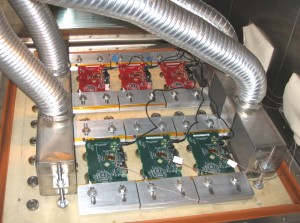Highly Accelerated Life Testing (HALT) is a rigorous reliability test method that is used to expose product weaknesses. The goal of HALT is to proactively find weaknesses and fix them, thereby increasing product reliability. Because of its accelerated nature, HALT is typically faster and less expensive than traditional testing techniques.

HALT can be effectively used multiple times over a product’s life time. During product development, it can find design weakness when changes are much less costly to make. By finding weaknesses and making changes early, HALT can lower product development costs and compress time to market. When HALT is used at the time a product is being introduced into the market, it can expose problems caused by new manufacturing processes. When used after a product has been introduced into the market, HALT can be used to audit product reliability caused by changes in components, manufacturing or suppliers etc. The bottom line is that HALT can reduce product development time and cost, reduce warranty costs, improve customer satisfaction, gain market share, and increase profits.
Continue reading What Is HALT (Highly Accelerated Life Testing) And Why Perform HALT? →